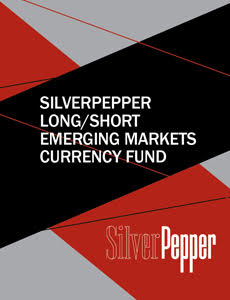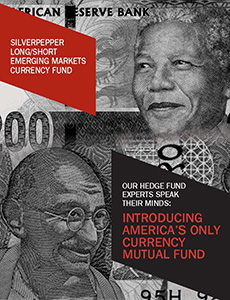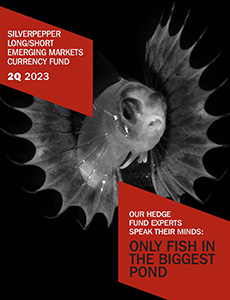Data for your brain.
Interactive fact sheet and performance
Coming Soon

Returns as of 06.30.2023
| YTD | Since Inception |
|---|
| Institutional class - SPEFX | -3.80% | -3.80% |
| Bloomberg Index 1-3 month T-Bill | 3.72% | 3.72% |
Correlation to Broad Market Indexes
| Since Inception |
|---|
| Bloomberg U.S. Bond Aggregate Index | TBD |
| S&P 500 Index | TBD |
| MSCI Emerging Markets Equity | TBD |
| Bloomberg Commodity Index | TBD |
Standard Deviation
| Since Inception |
|---|
| Bloomberg U.S. Aggregate Bond Index | TBD |
| S&P 500 Index | TBD |
| MSCI Emerging Markets Index | TBD |
| U.S. Dollar Index | TBD |
Monthly Returns, Institutional Class | Jan | Feb | Mar | Apr | May | Jun | Jul | Aug | Sep | Oct | Nov | Dec | Year |
|---|
| 2023 | 1.80% | -7.96% | 2.03% | 1.88% | -0.82% | 5.28% | -3.34% | -2.24% | 0.10% | | | | -3.80% |
| 2022 | | | | | | | | | | | | 0.00% | 0.00% |
The returns represent past performance. Past performance does not guarantee future results. Investment returns and principal value of an investment will fluctuate so that an investor’s shares, when redeemed, may be worth more or less than their original cost. Current performance may be lower or higher than the performance data quoted. Call 855-554-5540 for current month-end performance.
Total annual fund operating expenses are 2.01% for the Institutional class. The Advisor has contractually agreed to waive its fees and/or pay for expenses to ensure that total fund operating expenses (excluding, as applicable taxes, leverage interest, brokerage commissions, dividend and interest expenses on short sales, acquired fund fees and expenses (as determined in accordance with Form N-1A), incurred in connection with any merger or reorganization, or any extraordinary expenses such as litigation expenses) do not exceed 1.85% for the Institutional class. This agreement is in effect until October 31, 2032.
Inception date is December 28, 2022. Performance and risk measures greater than one year are annualized. Correlation and standard deviation figures are since the Fund’s inception and are for the Institutional class shares.
Behavioral Price Patterns are aligned with the concepts identified within the field of Behavioral Economics. Behavioral Economics is the study of psychology as it relates to the economic decision-making processes of individuals and institutions. In emerging-market currencies, because of the higher interest rates that are typically associated with emerging-market currencies, we attempt to identify price-patterns that are associated with the base phychological behaviors of greed and fear.
Correlation is a statistical measure of how two securities move in relation to each other, ranging from -1 to +1. A correlation of 0 means the relationship between the two securities is completely random, while +1 indicates a perfect positive relationship and -1 a perfect negative relationship.
Standard Deviation is a term used to indicate and quantify risk. Specifically, standard deviation indicates the volatility of a fund’s total returns. In general, the higher the standard deviation, the greater the volatility of return. If a fund had a mean (average return) of 10%, and a standard deviation of 2%, you would expect the fund’s returns to fall within 12% and 8%, 68% of the time. And 95% of the time, you would expect its returns to fall within 6% and 14%.
U.S. Dollar Index (USDX) is a measure of the value of the U.S. dollar relative to the value of a basket of currencies of most of the U.S.’s most significant trading partners. This index is similar to other trade-weighted indexes, which also use the exchange rates from the same major currencies.
MSCI Emerging Markets Currency Index tracks the performance of 25 emerging market currencies relative to the US dollar.
The Bloomberg Barclays U.S. Aggregate Bond Index is an index of the U.S. investment-grade fixed-rate bond market, including both government and corporate bonds. Index Performance is not intended to predict or project the performance of the Fund. Performance data quoted represents past performance, which is no guarantee of future results. Investing in an index is not possible.
Principal Risks:
Currency Risk. The values of investments in securities denominated in foreign currencies increase or decrease as the rates of exchange between those currencies and the U.S. dollar change. Currency conversion costs and currency fluctuations could erase investment gains or add to investment losses. Currency exchange rates can be volatile and are affected by factors such as general economic conditions, the actions of the U.S. and foreign governments or central banks, the imposition of currency controls, and speculation.
Derivatives Risk. Derivatives include instruments and contracts that are based on and valued in relation to, one or more underlying securities, financial benchmarks, indices, or other reference obligations or measures of value. Major types of derivatives include futures, swaps and forward contracts. Using derivatives exposes the Fund to additional or heightened risks, including leverage risk, liquidity risk, valuation risk, market risk, counterparty risk, and credit risk. Derivatives transactions can be highly illiquid and difficult to unwind or value, they can increase Fund volatility, and changes in the value of a derivative held by the Fund may not correlate with the value of the underlying instrument or the Fund’s other investments. Derivatives are subject to additional risks such as operational risk, including settlement issues, and legal risk, including that underlying documentation is incomplete or ambiguous.
Emerging Markets Risk. Many of the risks with respect to foreign investments are more pronounced for investments in issuers in and currencies of developing or emerging market countries. Emerging market countries tend to have more government exchange controls, more volatile interest and currency exchange rates, less market regulation, and less developed and less stable economic, political and legal systems than those of more developed countries. There may be less publicly available and reliable information about issuers in emerging markets than is available about issuers in more developed markets. In addition, emerging market countries may experience high levels of inflation and may have less liquid securities markets and less efficient trading and settlement systems.
Foreign Investment Risk. Investments in foreign securities are affected by risk factors generally not thought to be present in the United States. The prices of foreign securities may be more volatile than the prices of securities of U.S. issuers because of economic and social conditions abroad, political developments, and changes in the regulatory environments of foreign countries. Special risks associated with investments in foreign markets include less liquidity, less developed or less efficient trading markets, lack of comprehensive company information, less government supervision of exchanges, brokers and issuers, greater risks associated with counterparties and settlement, and difficulty in enforcing contractual obligations. Changes in exchange rates and interest rates, and the imposition of foreign taxes, sanctions, confiscations, trade restrictions (including tariffs) and other government restrictions by the United States and/or other governments may adversely affect the values of a Fund’s foreign investments.
Please see the prospectus for a full discussion of risks.



